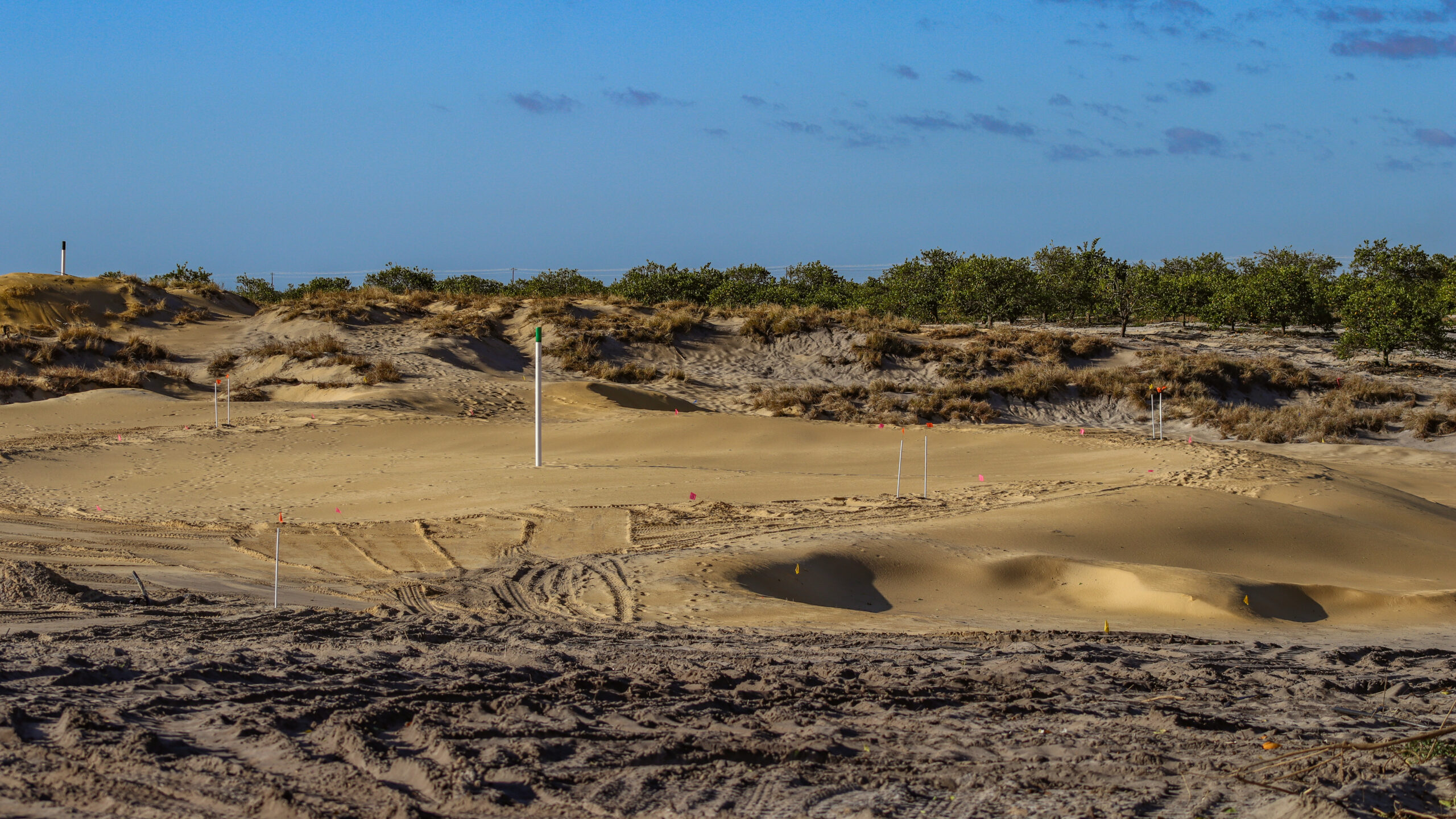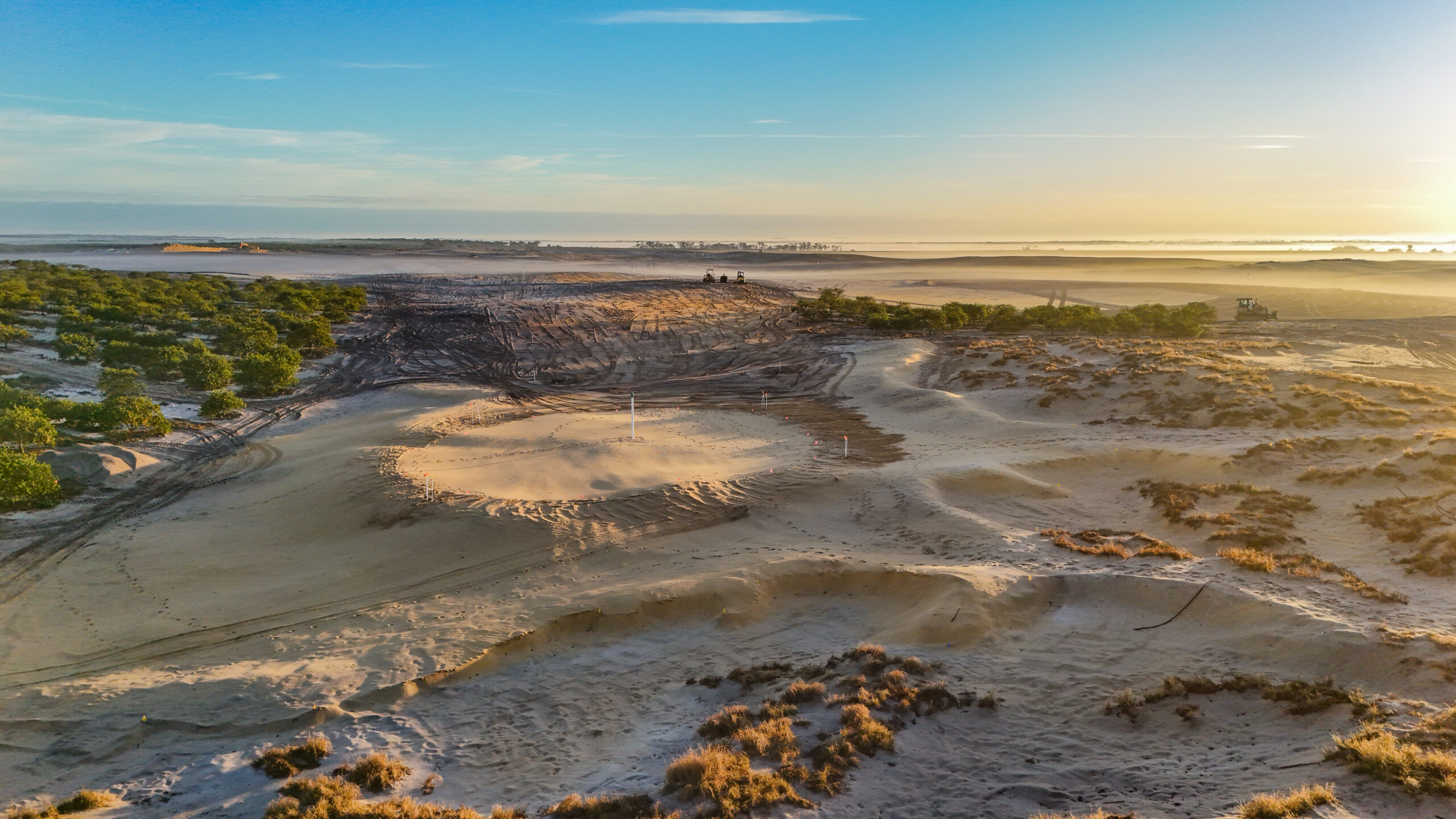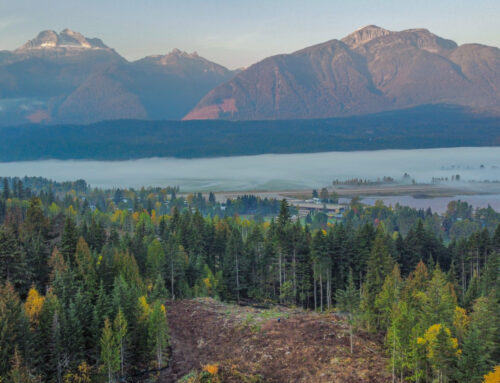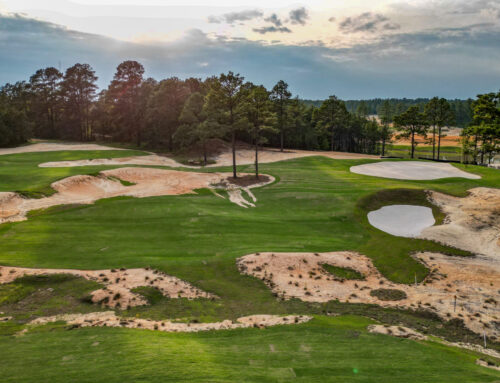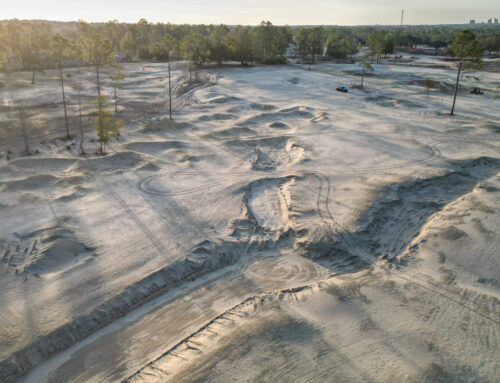Driving from Miami Beach to Venus, Florida, much of the landscape is nearly as flat as the table dinner was served on the night before. Exiting the sprawling metropolis of Miami provides a stunning look into the sky sparkled with stars and an unobstructed view for miles on end… far different from the bright lights of the nightlife the city provides. It is a sharp realization that there is really nothing out here—in the middle of the state, that is—and that becomes more and more apparent as I approach the pin Neil Cameron, a longtime Caveman member and Hanse/Wagner associate since Castle Stuart, dropped on a map to help me navigate to High Grove’s property.
As the time on my CarPlay navigation dwindles while seemingly disappearing into the belly of Florida’s rural middle, out of nowhere there’s a gentle climb in the landscape about 15 minutes from my destination. Nothing too severe or dramatic, but just enough to start to pique interest. This is Florida, after all, and there really isn’t all that much elevation change in the state. Even places like Cabot Citrus Farms (Roost) and Seminole, two notable Florida golf courses for their elevation change, would be, at best, moderately hilly in other parts of the country, whereas in Florida, they’re seen as some of the more undulating golf courses around. Any elevation change begins to spark curiosity and not only that, but any golf course with elevation change immediately has an advantage over a surplus of big-name golf courses opening in the state on flat land.
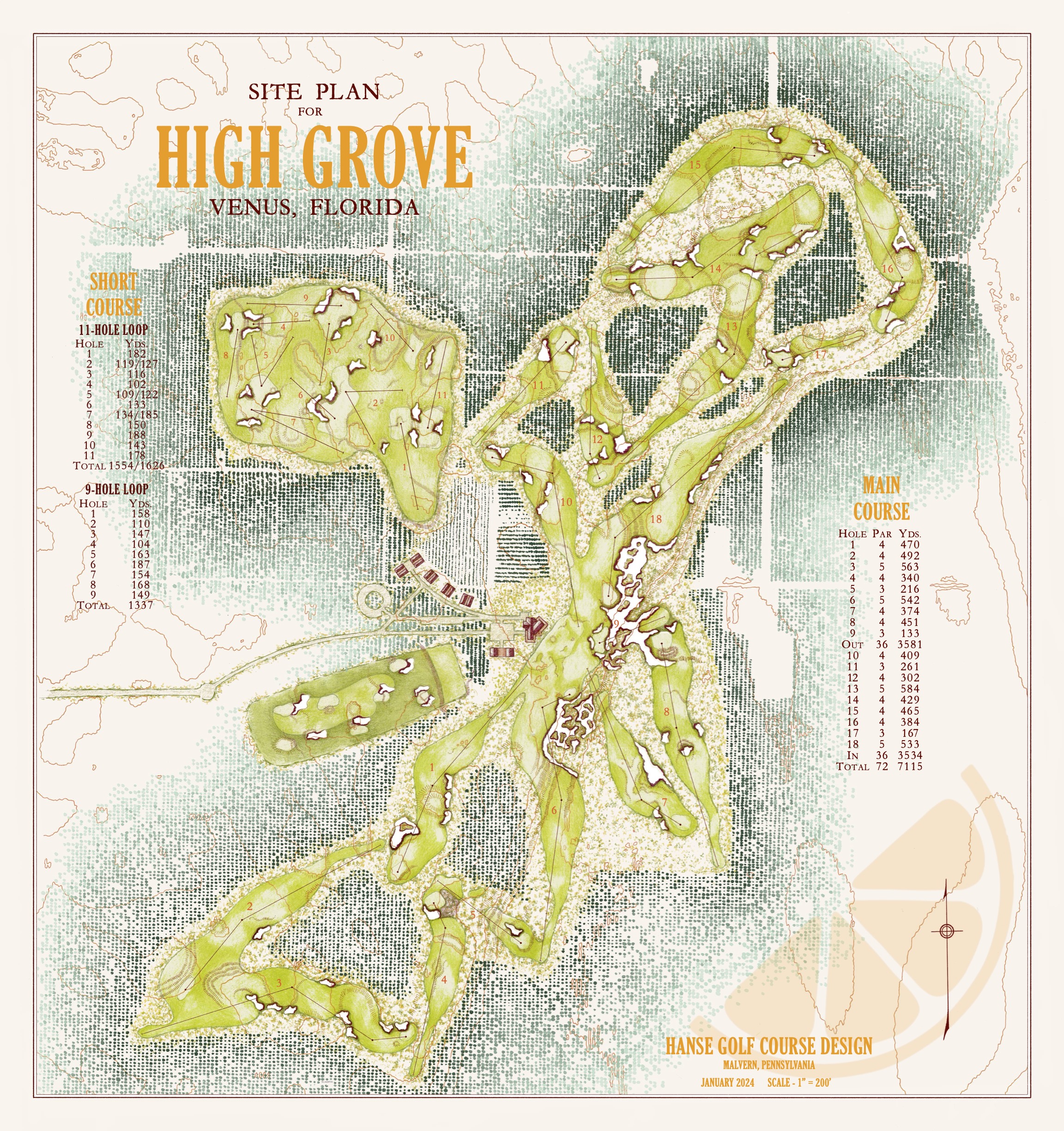
Upon arrival, it is hard to fathom this is still Florida and not Aiken, South Carolina or down the street from Ohoopee Match Club in Georgia, arguably Gil Hanse & Jim Wagner’s magnum opus to this point. Turning off Highway 27 reveals the sandy, unpaved road over rollicking hills. The view to the east feels like a hundred miles as the low sun splashes off the white sand, while the north, orange trees dot the hills, hiding the undulating terrain under their canopies, waiting to be revealed. Looking left on the drive in, gaps in the trees—some by design to let the farmers move around through their fields, others naturally occuring—reveal what made Gil Hanse & Jim Wagner captivated by this property, and why a similar team of developers (including Colin Sheehan and Bert Guy) behind recent golf courses like Ohoopee Match Club (Hanse/Wagner), Childress Hall (Doak + Hanse/Wagner), Tree Farm (Goalby/Blair), and The Fall Line (Ogilvy, Cocking, & Mead) chose Venus, Florida, of all locations.
More on the property, but Gil Hanse & Jim Wagner have, seemingly, claimed Florida as their state, or it at least seems that way. Post COVID-19, the duo have contributed a whopping five golf courses to the state: The Park in West Palm Beach, an overhauled of a beloved municipal golf course; Jonathan’s Landing Match course, a similarly aggressive redo of an old layout in Jupiter; Kinsale, the newly minted new golf course in Naples; and Apogee’s West course, firmly in the exploding Hobe Sound golf scene, as well as High Grove, currently under construction. That’s not including the duo’s overhaul of Trump National Doral in Miami earlier in the 2010s, or Streamsong Black in 2018, which makes more golf course in the state than Tom Doak and Bill Coore, combined.
Those previous projects, though, don’t have what High Grove has, and that’s a sandy, hilly piece of ground to work with. Streamsong and The Park do have some elevation change, but not quite like this.
Upon arrival and parking the car near the 1st tee box—a shared common short grass area with the clubhouse, 6th green, 7th tee, 10th tee, 18th green, and the practice putting green—a panoramic view of the expansive front nine awaits, while the back nine hides in the orange tees to the north. The opener heads due south towards the expansive sandy abyss, as if this is set in the Dune series. There’s no sandwalking necessary, but without a firmer playing surface like grass to make it easier, walking does exasperate the severity of the property. With each step, my boots sink into the sand—a good thing for golf—but makes the gentle rise over the ridge and fall back down to the green at the opening hole feel much more severe than it is. There’s always concern over a routing’s ease or walkability, but anytime you can walk it in pure sand, it’s a good sign for when grass is down as it only gets easier.
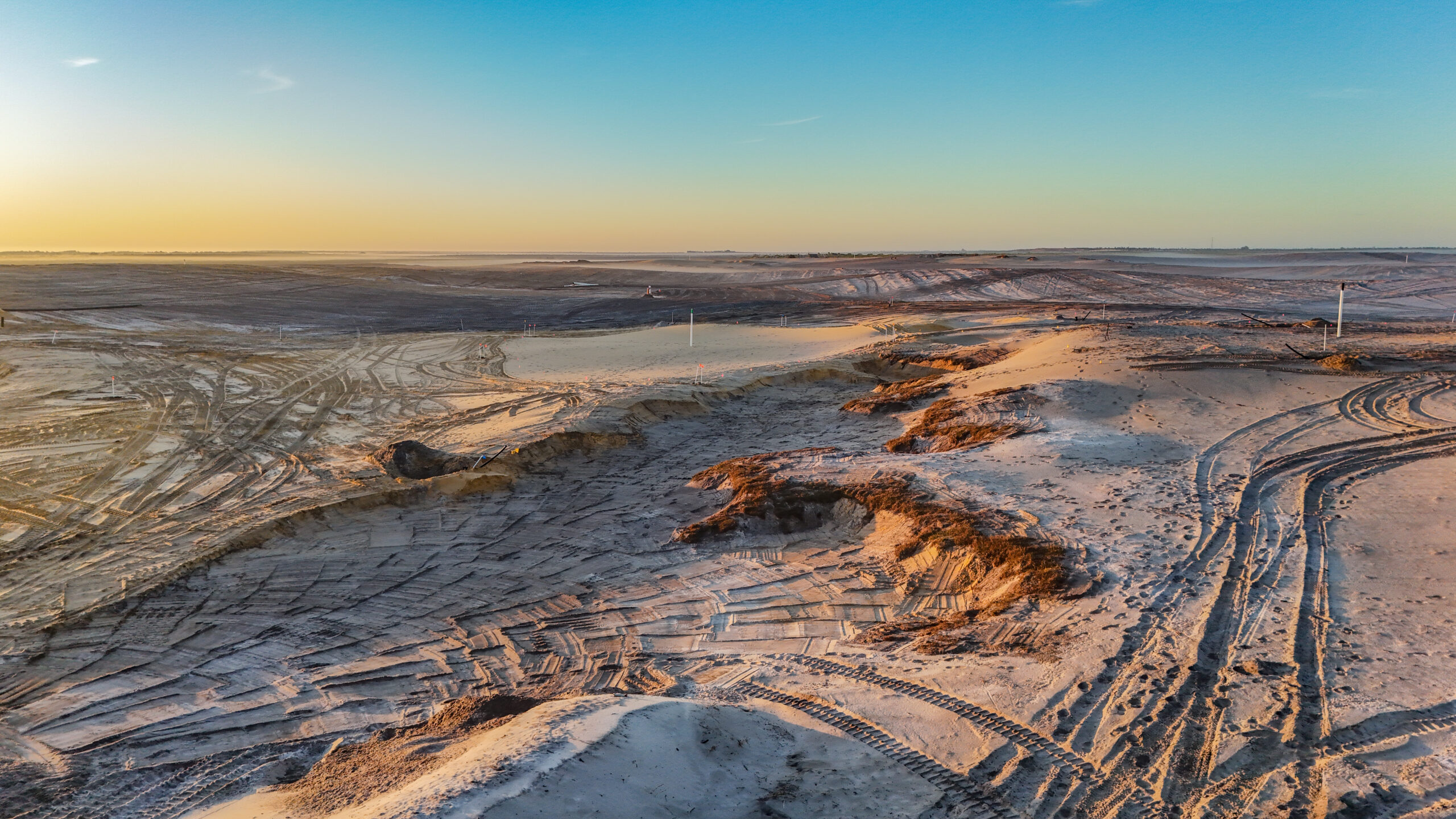
The opening hole’s green site
Truthfully, this is a very early thoughts, given four holes are shaped, and they all come at the opening stretch of the golf course. The back nine is yet to be cleared, and the second half of the front nine is currently under construction. With that said, those four opening holes rough shaped give a decent indication on what’s to come when the full eighteen holes opens. The first, a brute of a par 4 working up and over the hillside, is immediately followed by a harder, more difficult long par 4 tucked into the dunes. If the first hole didn’t introduce the golfer formally to the surplus of unique topography at High Grove, the second surely does.
Rising from the low ground the first tumbled into, the par 4 approaching 500 yards allows the golfer to get their barrings on, with—at least according to the plan—one bunker up the left, and a wide, spacious fairway out to the right. Much like the first hole, the green’s location and surrounding area steals the show. With the high side dune up the left, and a fall off on the right as well as the first taste of the orange groves coming into play—at least for the first couple years until more grow in—the second sits in the low, secluded from the rest of the golf course in a rare moment of tranquility for such a big ballpark.
- Ground view, second green
- The second hole, in reverse
Somewhat surprisingly, the par 72, 7,100 yard length is short (!) for modern standards, and even though the first two par 4’s are nearly 1,000 of those yards combined, it handles much of the heavy lifting early. In fact, they’re the two longest par 4’s on the golf course, with a 460+ par 4 not coming until the 15th hole on the inward stretch.
From the 3rd to the 11th, the golf course is manageable, and without the burdens of having to worry about length, the variety in golf excels. Take the 3rd and 13th, for examples, the two longer par 5’s on the golf course that both side-wind their way through the terrain in opposite of each other: the 3rd, working its way right off the tee then gently back to the left, while the 13th in reverse, left off the tee, then back right. It’s refreshing to see 370 and 410 yard par 4’s on the scorecard given modern architecture has seemingly seen a disappearance of the middle-length par 4. They’re either short, tempting you into trying to drive the green or get close to it, or pushing (or over) 50o yards. at High Grove, the variety in the par 4’s and the scorecard yardage, at the very least, is appealing.
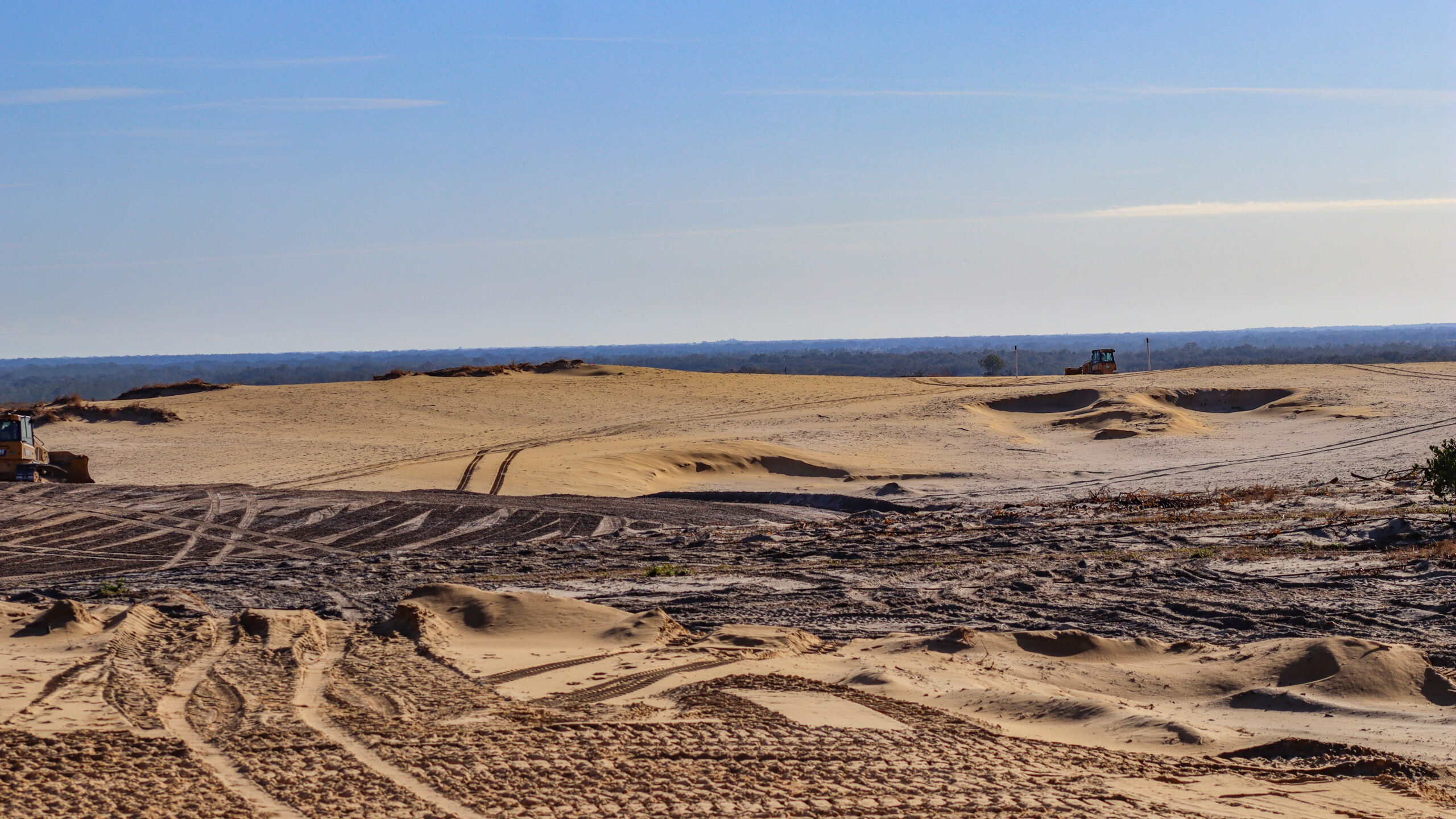
The tee shot on the 563 yard par 5, 3rd
After the third, golf holes in the dirt become more of an abstract thought—call it concepts of a hole. Some jump off the page a bit easier, like the 6th cutting across the ridge line that divides the lower portion of the property that calls the 5th, 7th, 8th, and the tee at the 9th home. Down there, it is fairly flat and nondescript, with many of the features sitting low to the ground. It is more aligned with flatter golf courses across the state, but is anything atypical given how the dune is used: the 5th, even though the green sits in the flats, tumbles off the hillside; as does the 7th following the climb diagonally at the 6th to a green 40 feet above the fairway with bunkers edged into the slope working at an angle, dividing the upper and lower side of the hole.
Only the 8th will be entirely flat, though if the plan above is any indication, they have thought about this with its interesting bunker array in the fairway and the sandy scrub from the dune ridge trickling over from the 9th surrounding the left side of the green complex. The front nine ends with a charming uphill par 3, topping out at a mere 133 yards.
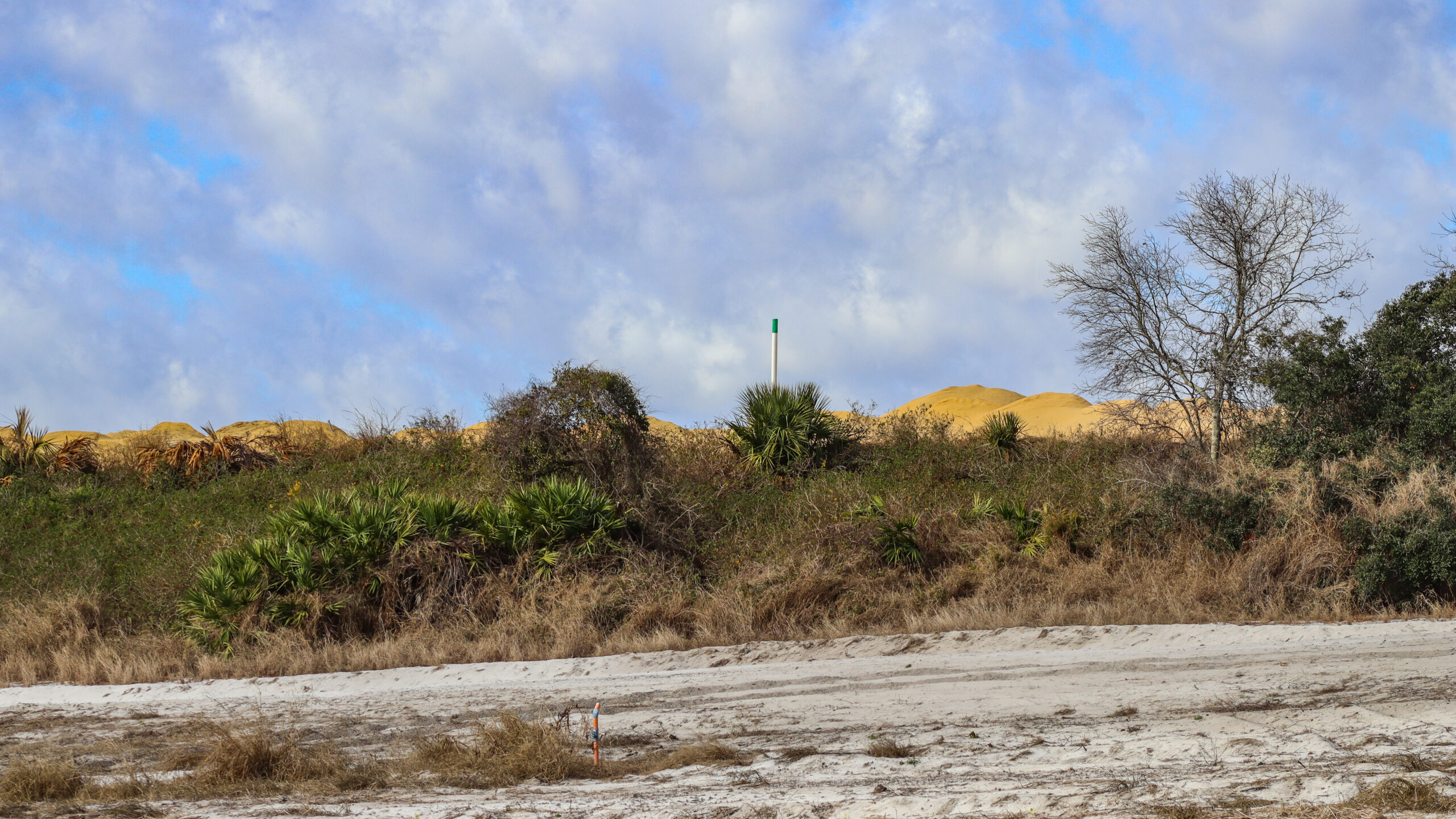
Clearing efforts for the back nine have yet to begin, so much of the inward nine remains hidden under orange trees with no more than centre cuts defining where the holes go. Even without a majority of the trees removed, the terrain is more than impressive, even if it is a bit hidden.
No shaping has taken place on this side, either, and as with a majority of these new golf courses built by firms who pride themselves on the “design & build” element of their work (where, more or less, the main designer, in this case Gil Hanse or Jim Wagner, are not afraid to get in the machinery themselves), the plan itself is fluid and not set in stone, so it can be hard to pinpoint down exactly what it will end up like.
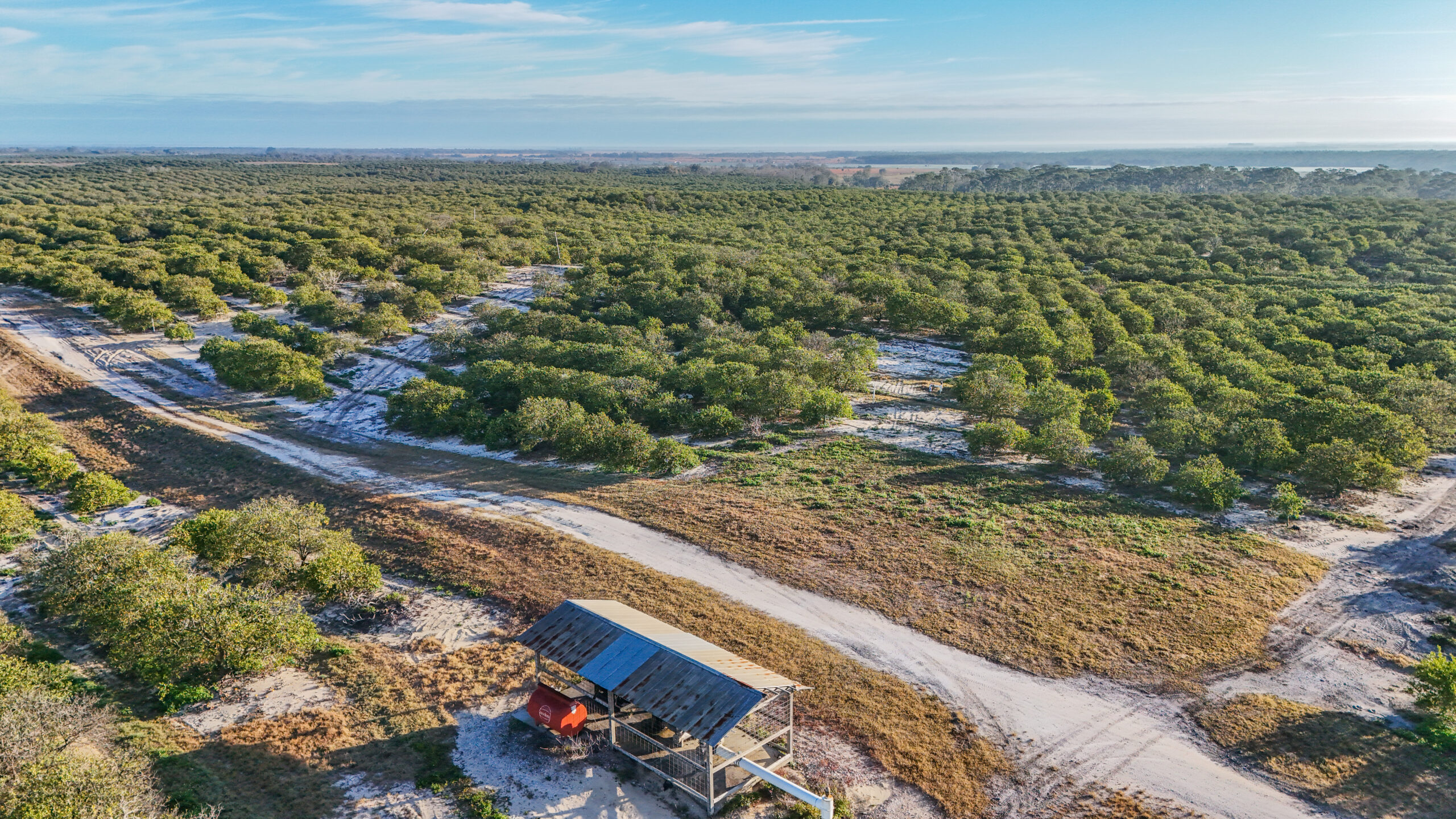
Overlooking the back nine at High Grove
With that said, there are still concepts that are intriguing, especially with an idea of the topography underneath. The 18th, flanking against the ridge line much of the front nine negotiates with, will be a dramatic finishing hole, especially at the gambling length of 533 yards. There is a bit of similarity to all the par 5’s here on paper, with “S” shaped fairways primarily defining each hole, though the topography is dramatically different with the 6th climbing up on an angle across the ridge, the 3rd climbing the entire way, the 18th is mostly over gentle terrain with a sharp fall off left the entire way, and the 13th handling some of the most severe land on the entire golf course across 584 yards.
Among the back nine highlights that could be standout holes come opening day, the 12th is a stupendous hole in concept and in the ground. Topping out at 302 yards but climbing the entire way, the echelon bunkers cut into the hillside define the three tiers of fairway: low, for those who fail to get it above the two big bunkers, middle, where most layups will be played to, and up top and near the green, where a bunker-less surface awaits.
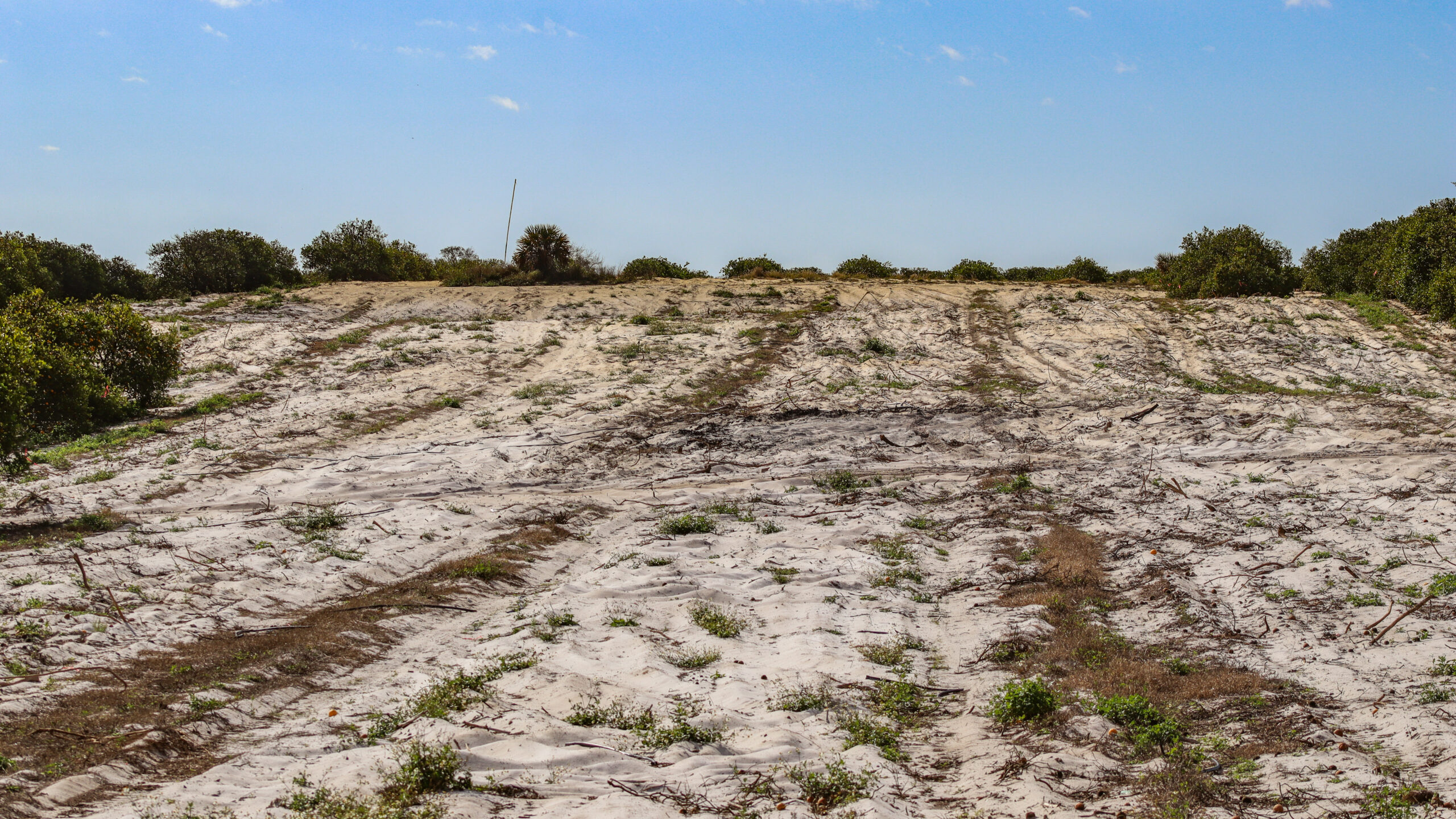
The gentle rise at the 12th
Whether or not the 12th remains exactly to plan is yet to be seen, but the potential is there for an excellent drivable par 4 that will actually be drivable for most.
The 14th is another hole that’s equally as interesting on paper and upon walking the future home of the 429 yard two-shot hole. The 13th ends up sharing the last ~150 yards of fairway with the 14th, and in its partnership, two outside bunkers on the 13th end up being aiming or top shot bunkers off the tee. The inside right corner guarded by bunkers await the eager line, while most, if not all golfers, will notice the depression in front of the green that sits in a bowl.
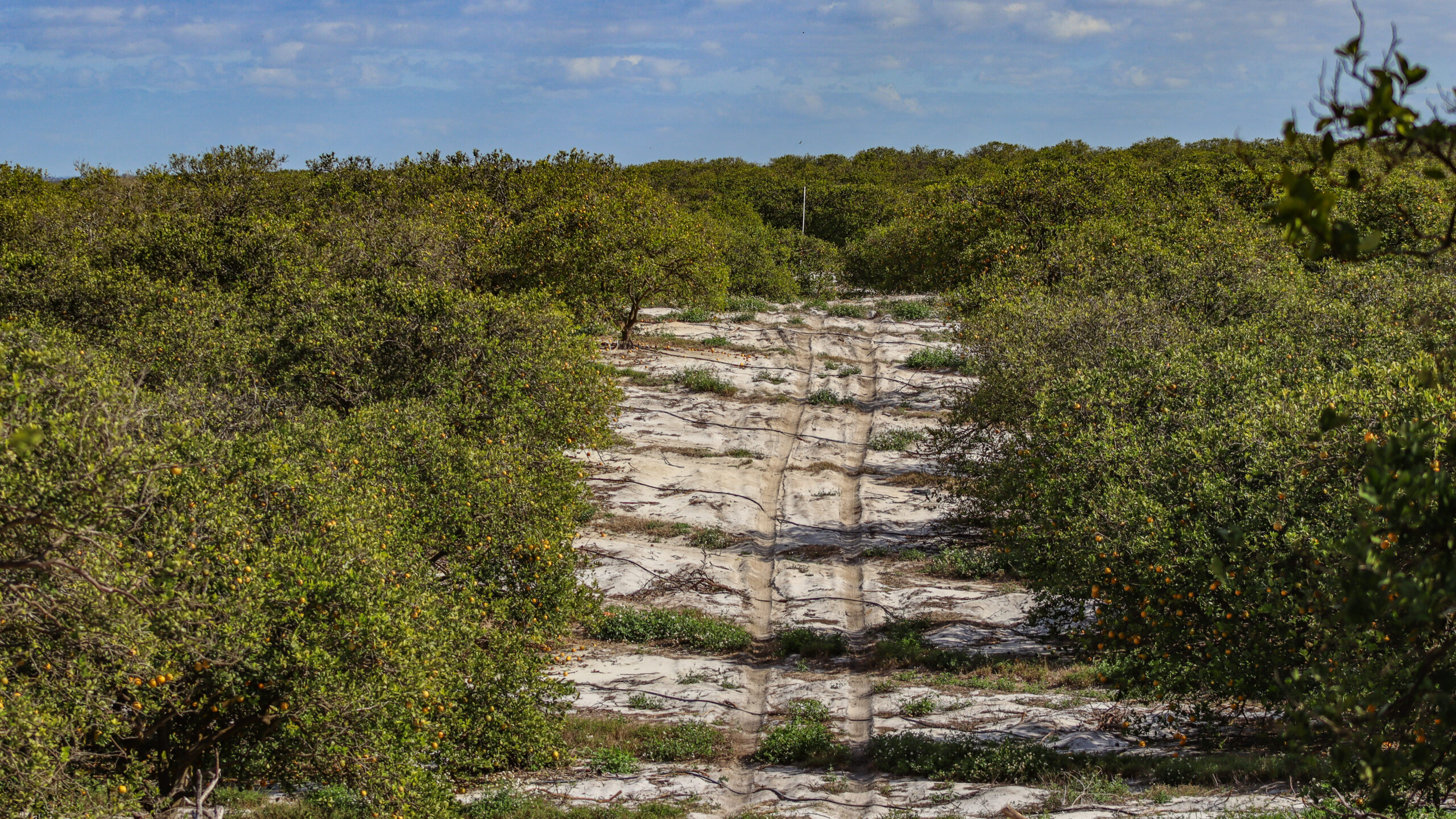
The tee shot on the 14th, with the turn post in the distance
Of course, anything without shaping becomes increasingly difficult to assess the quality. That’s not really the purpose of “Early Thoughts,” but it can be hard to avoid hyperbolic claims or early assessments. In the age of social media and society’s short attention spans, marketing agencies are too keen on getting the hype out there to drum up interest for when the grand opening comes, but golf courses are living organisms that grow into themselves with time.
Take the photos as the example, where the front nine’s expansiveness jumps off the page, and the back nine dives into the orange trees in sharp contrast. Early visitors will see the distinct two environments, but planting efforts on the front nine and clearing on the back nine will bring those two nines closer to each other, stylistically. Having two nines so abrupt and different is far from ideal, and High Grove will eventually grow into that as it begins to settle in. The orange trees on the front were unfortunately unhealthy, so there will be efforts to merge the two together.
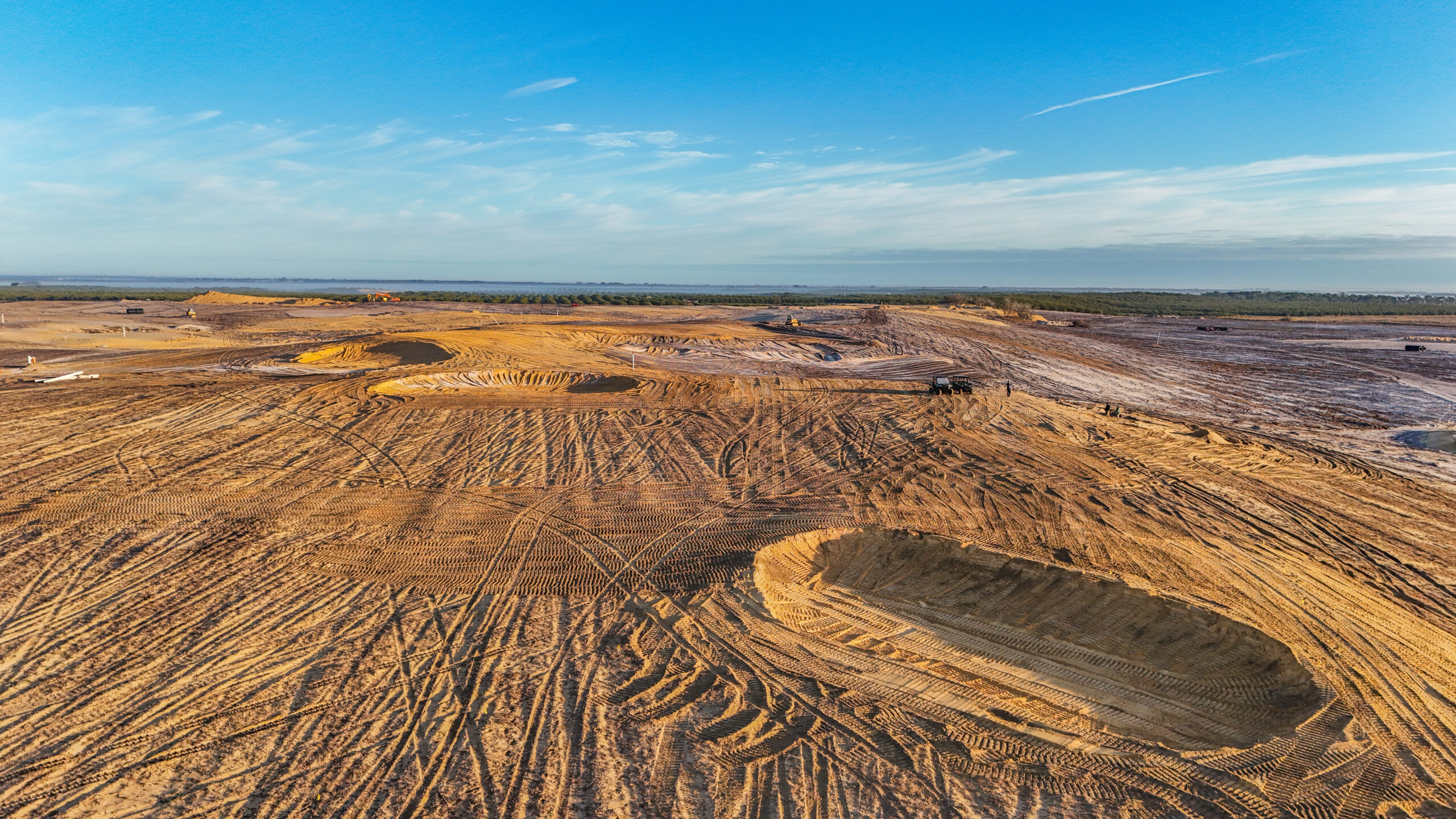
The 4th beginning to take shape
Expectations aside, High Grove is on a short-list of best properties for golf in Florida alongside Seminole, Jupiter Hills, Mountain Lake, Cabot Citrus Farms, Streamsong, and, presumably, Old Shores, the Keiser-led development in the Panhandle. Elevation change helps, but sand does, too… and High Grove has both.
Hobe Sound might have the attention right now for its showdown between Tom Doak (Sandglass), Bill Coore & Ben Crenshaw (McArthur’s Backyard), Gil Hanse & Jim Wagner (Apogee West), Rod Whitman/Dave Axland/Keith Cutten (The Ranch 36), Tom Fazio (Atlantic Shores), Tommy Fazio & Mike Davis (Apogee South), Bobby Weed (The Grove XVIII), Kyle Phillios (Apogee North), and more, but High Grove’s property has the potential to spoil the party. That’s up to Gil Hanse & Jim Wagner plus the Cavemen, but the team who found the property, and those motivated to bring golf here, have set the table for a truly excellent golf course.


